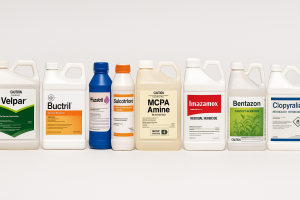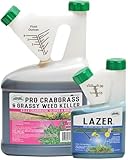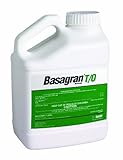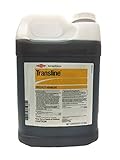Choosing the best herbicide for flax is crucial for a successful and weed-free harvest. With the right product, flax farmers can protect yields and maintain healthy crops.
Weeds compete with flax for nutrients, water, and sunlight. Effective herbicides help eliminate this competition early and efficiently. This article reviews the 10 best herbicides for flax based on performance, safety, and reliability. Each product targets specific weed problems in flax farming Clethodim 120g/L EC is a selective herbicide designed to control annual and perennial grasses in flax fields. Its selectivity ensures that broadleaf crops like flax remain unharmed while effectively eliminating grassy weeds. This makes it an ideal choice for flax farmers dealing with grass weed infestations. The herbicide works by inhibiting lipid synthesis in grasses, leading to their eventual death. Its systemic action allows it to be absorbed and translocated within the plant, ensuring comprehensive control. Application is recommended during the early growth stages of weeds for maximum efficacy. Clethodim 120g/L EC is compatible with various flax growth stages, providing flexibility in application timing. Its effectiveness and crop safety profile make it a top choice for flax cultivation. Regular monitoring and adherence to application guidelines will ensure optimal results. Pros: Highly selective Systemic action Effective on grasses Safe for flax Flexible application Rapid absorption Minimal residue Cons: Not for broadleaf weeds Requires precise timing May need repeat application 2. Hexazinone (Velpar) Hexazinone, marketed as Velpar, is a non-selective herbicide effective against a wide range of weeds. Its broad-spectrum activity makes it suitable for pre-planting applications in flax fields to clear existing vegetation. This ensures a clean seedbed for flax cultivation. The herbicide functions by inhibiting photosynthesis, leading to the death of both grasses and broadleaf weeds. Its residual activity provides extended weed control, reducing the need for multiple applications. However, caution is advised due to its non-selective nature, which can harm desired plants if not applied correctly. Hexazinone is best used in fallow periods or before flax planting. Proper application techniques and adherence to safety guidelines are crucial to prevent unintended crop damage. Its effectiveness in weed eradication makes it a valuable tool in flax field preparation. Pros: Broad-spectrum control Long residual effect Effective pre-planting Reduces weed pressure Minimizes re-growth Enhances seedbed quality Cost-effective Cons: Non-selective Potential crop injury Environmental concerns Buctril, containing bromoxynil, is a contact herbicide effective against broadleaf weeds in flax fields. Its mode of action involves disrupting photosynthesis, leading to rapid weed desiccation. This quick action helps prevent competition for resources in flax crops. The herbicide is most effective when applied to young, actively growing weeds. Its contact nature means it doesn’t translocate within the plant, reducing the risk of damage to non-target species. However, thorough coverage is essential for optimal results. Buctril is compatible with various flax growth stages, offering flexibility in weed management. Its rapid action and selectivity make it a valuable component in integrated weed management strategies for flax cultivation. Pros: Rapid action Effective on broadleaf weeds Minimal crop injury Flexible application timing Low environmental persistence Compatible with other herbicides Enhances crop vigor Cons: Limited to contact action Requires thorough coverage Not effective on grasses Flazasulfuron is a systemic herbicide that inhibits amino acid synthesis, leading to the death of both grasses and broadleaf weeds. Its translocation within the plant ensures comprehensive weed control in flax fields. This makes it an effective tool for managing diverse weed populations. The herbicide is absorbed through foliage and roots, providing flexibility in application methods. Its residual activity offers extended weed suppression, reducing the frequency of applications. However, adherence to recommended rates is crucial to prevent potential crop injury. Flazasulfuron is suitable for use in various flax growth stages, enhancing its utility in weed management programs. Its systemic action and broad-spectrum efficacy make it a valuable addition to flax cultivation practices. Pros: Systemic action Broad-spectrum control Residual activity Flexible application Effective on tough weeds Reduces application frequency Enhances crop competitiveness Cons: Potential crop sensitivity Requires precise application Environmental considerations Sulcotrione The herbicide is absorbed through roots and shoots, providing comprehensive control of emerging weeds. Its selectivity ensures minimal impact on flax when applied at recommended rates. However, soil moisture and temperature can influence its efficacy. Sulcotrione is best used in well-prepared seedbeds with adequate moisture. Its pre-emergent activity and crop safety profile make it a valuable tool in flax weed management strategies. Pros: Effective pre-emergent control Broad-spectrum activity Selective for flax Reduces early weed competition Enhances crop establishment Compatible with other herbicides Low application rates Cons: Dependent on soil conditions Limited post-emergent activity Requires precise timing MCPA Amine When applied correctly, it targets broadleaf weeds without harming the flax crop.Its water-soluble nature allows it to be absorbed quickly by leaves and translocated throughout the plant. MCPA Amine is most effective when applied to young, actively growing weeds and can be tank-mixed with other herbicides for enhanced weed control. Its low volatility makes it safe for nearby sensitive crops when applied according to label directions.Because of its reliable performance, MCPA Amine is a standard component in integrated weed management for flax. However, it should be rotated with other herbicides to prevent resistance development in weed populations. Pros: Selective for flax Effective on broadleaf weeds Safe for post-emergence Low volatility Easy to mix Systemic activity Cost-effective Cons: Ineffective on grasses Resistance risk if overused Must avoid drift Quizalofop-P-ethyl is a highly effective post-emergent herbicide used to eliminate annual and perennial grass weeds in flax without harming the crop. It is an ACCase inhibitor, disrupting fatty acid synthesis in grasses, leading to plant death while sparing broadleaf crops like flax. This herbicide is rapidly absorbed by leaves and transported throughout the plant, including to the roots and rhizomes, ensuring complete eradication of grass weeds. It’s ideal for targeting pests such as foxtail, barnyardgrass, and wild oats in flax fields. Quizalofop-P-ethyl is usually applied when grass weeds are in the early growth stages for maximum efficiency. It is commonly used in combination with broadleaf herbicides for comprehensive weed control programs in flax production. Pros: Highly grass-specific Systemic action Fast absorption Minimal crop impact Compatible with flax Flexible application timing Excellent tank-mix partner Cons: Not for broadleaf weeds Requires early application Resistance risk Imazamox is a residual herbicide that provides extended control of both broadleaf and grass weeds in flax fields. It inhibits the ALS (acetolactate synthase) enzyme, which is essential for weed growth, effectively preventing further development. Its residual nature means that one application can protect flax fields for weeks, making it particularly useful in seasons with high weed pressure. Imazamox is absorbed by both roots and leaves and moves systemically throughout the weed. When used correctly, it does not harm flax, but it must be applied at the proper crop stage. Its use should be managed within a resistance-prevention strategy due to its specific mode of action. Pros: Long residual control Systemic activity Broad-spectrum weed control Effective on both grass and broadleaf weeds Reduces application frequency Enhances crop competition Convenient for large fields Cons: Resistance management needed Timing critical Requires soil moisture Bentazon is a post-emergent contact herbicide that is particularly effective in wet and humid conditions, where other herbicides might underperform. It is widely used to control problematic broadleaf weeds like pigweed and cocklebur in flax. This herbicide interferes with photosynthesis, causing rapid weed kill upon direct contact. Bentazon is ideal when weeds are small and actively growing. It is also known for having minimal residual activity, making it an environmentally friendly choice. Due to its contact-only nature, coverage is essential. Spraying during calm weather ensures it reaches all target foliage. It is often tank-mixed with systemic herbicides for improved performance. Pros: Works in wet weather Broadleaf weed control Fast-acting Minimal soil residue Safe for flax Compatible with other herbicides Easy to apply Cons: No systemic action Requires thorough coverage Not effective on grasses Clopyralid It acts systemically, moving through the plant and disrupting cell division and growth. It is absorbed mainly through foliage and has a slow but steady mode of action that ensures thorough eradication. Clopyralid can be applied alone or in combination with other herbicides depending on weed species present. Its long-lasting effects and targeted action make it ideal for persistent and perennial weed species. Pros: Controls hard-to-kill weeds Systemic action Long-lasting control Low crop risk Compatible with flax Tank-mix ready Selective application Cons: Doesn’t kill grasses Limited on annual weeds Slow kill speed Tips for Choosing the Best Herbicide for Flax Identify Weed Types: Identify Weed Types: When selecting a flax herbicide, first determine whether the dominant weeds are grassy or broadleaf. This helps in choosing the most effective herbicide for flax that targets the specific weed species. Understand Herbicide Selectivity: Choose between a selective flax herbicide that targets specific weeds and a non-selective one that controls all vegetation. This decision depends on whether you need to preserve nearby crops or clear all unwanted growth. Consider Application Timing: Timing is critical when applying a flax herbicide. Choose a pre-emergent herbicide if targeting weeds before they sprout, or a post-emergent option for weeds that have already appeared. Evaluate Environmental Impact: A high-quality flax herbicide should protect the environment while delivering results. Select products with minimal residual effects to maintain soil health and avoid groundwater contamination. Check Crop Safety: Always confirm that the chosen flax herbicide is safe for use on flax crops. Using the wrong product can result in severe crop damage or yield loss. Assess Resistance Management: Rotate your flax herbicide with others that have different modes of action. This strategy helps prevent the development of herbicide-resistant weeds. Review Manufacturer Guidelines: Follow the label instructions for your flax herbicide carefully. Adhering to recommended application rates and safety measures ensures effectiveness and protects both crops and users. 1. What is the best time to apply herbicides on flax? 2. Can you mix herbicides for flax? 3. Are there organic herbicide options for flax? 4. How often should herbicides be applied in flax fields? 5. Can herbicides damage flax? 6. What weeds are most common in flax fields? 7. How can I avoid herbicide resistance in flax fields? Conclusion Choosing the best herbicide for flax requires a balanced approach that considers weed type, crop safety, timing, and environmental conditions. By understanding each herbicide’s strengths and limitations, flax farmers can create a weed control program that boosts yield while preserving soil health. Remember, integrating mechanical, cultural, and chemical methods is the best long-term solution. Make your decision wisely and consult local extension services for the best results.Top 10 Best Herbicides for Flax
1. Clethodim 120g/L EC
 – Best Selective Herbicide for Flax
– Best Selective Herbicide for Flax
 – Best Non-Selective Herbicide for Flax
– Best Non-Selective Herbicide for Flax
3. Buctril (Bromoxynil)
 – Best Contact Herbicide for Flax
– Best Contact Herbicide for Flax
4. Flazasulfuron
 – Best Systemic Herbicide for Flax
– Best Systemic Herbicide for Flax
5. Sulcotrione
 – Best Pre-Emergent Herbicide for Flax
– Best Pre-Emergent Herbicide for Flax is a pre-emergent herbicide effective against a range of broadleaf and grassy weeds in flax fields. Applied before weed emergence, it inhibits carotenoid biosynthesis, leading to bleaching and death of germinating weeds. This early intervention helps establish a weed-free environment for flax seedlings.
is a pre-emergent herbicide effective against a range of broadleaf and grassy weeds in flax fields. Applied before weed emergence, it inhibits carotenoid biosynthesis, leading to bleaching and death of germinating weeds. This early intervention helps establish a weed-free environment for flax seedlings.
6. MCPA Amine
 – Best Post-Emergent Broadleaf Herbicide for Flax
– Best Post-Emergent Broadleaf Herbicide for Flax is a post-emergent, selective herbicide widely used in flax farming to control broadleaf weeds such as chickweed, wild mustard, and lamb’s quarters. It belongs to the phenoxy group of herbicides and works by mimicking natural plant hormones (auxins), causing uncontrolled and unsustainable growth in susceptible weeds.
is a post-emergent, selective herbicide widely used in flax farming to control broadleaf weeds such as chickweed, wild mustard, and lamb’s quarters. It belongs to the phenoxy group of herbicides and works by mimicking natural plant hormones (auxins), causing uncontrolled and unsustainable growth in susceptible weeds.
7. Quizalofop-P-ethyl
 – Best Grass Weed Killer for Flax
– Best Grass Weed Killer for Flax
8. Imazamox
 – Best Residual Herbicide for Long-Term Weed Control in Flax
– Best Residual Herbicide for Long-Term Weed Control in Flax
9. Bentazon
 – Best Contact Herbicide for Flax in Wet Conditions
– Best Contact Herbicide for Flax in Wet Conditions
10. Clopyralid
 – Best Herbicide for Hard-to-Kill Broadleaf Weeds in Flax
– Best Herbicide for Hard-to-Kill Broadleaf Weeds in Flax is a selective herbicide best known for controlling tough broadleaf weeds like thistles, dandelions, and knapweeds in flax fields. It is particularly useful where conventional herbicides fail.
is a selective herbicide best known for controlling tough broadleaf weeds like thistles, dandelions, and knapweeds in flax fields. It is particularly useful where conventional herbicides fail.
Best Herbicide for Flax FAQs
The best time is when weeds are small and actively growing—usually between flax’s 2–6 leaf stages. Pre-emergent herbicides should be applied before weeds germinate.
Yes, many herbicides can be tank-mixed to improve weed control. Always check compatibility and follow label instructions.
Yes, but they’re limited and often less effective. Organic solutions like vinegar or flame weeding can suppress young weeds.
Generally, one or two applications per season are sufficient, depending on weed pressure and the herbicide used.
Yes, if applied incorrectly or in high doses. Always follow manufacturer guidelines and avoid drift onto flax plants.
Common weeds include wild oats, lamb’s quarters, pigweed, thistles, and foxtail.
Rotate herbicides with different modes of action, avoid repeated use of the same product, and implement integrated weed management strategies.
 , MCPA Amine, and Imazamox offer targeted and effective control for flax-specific weed issues.
, MCPA Amine, and Imazamox offer targeted and effective control for flax-specific weed issues.









